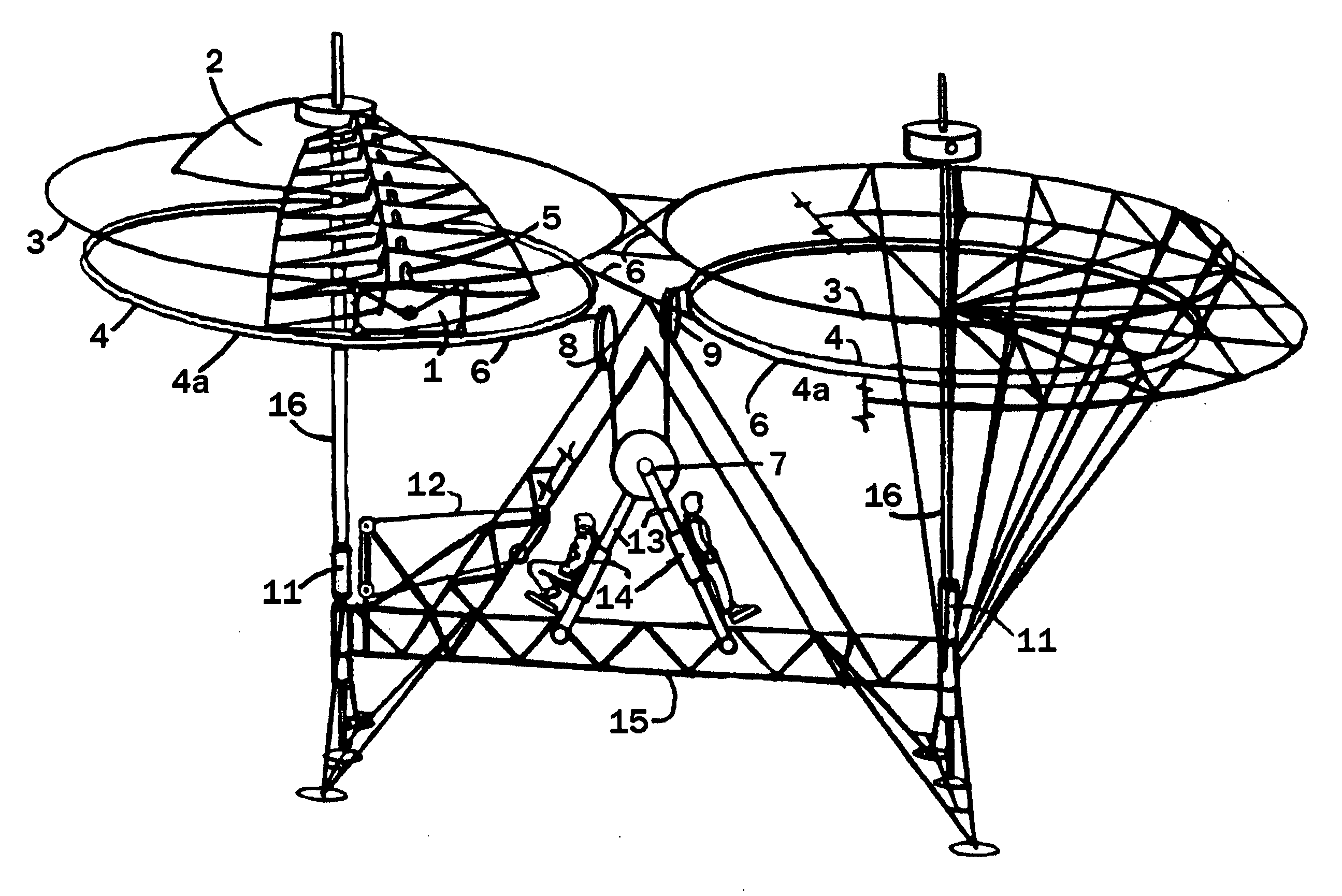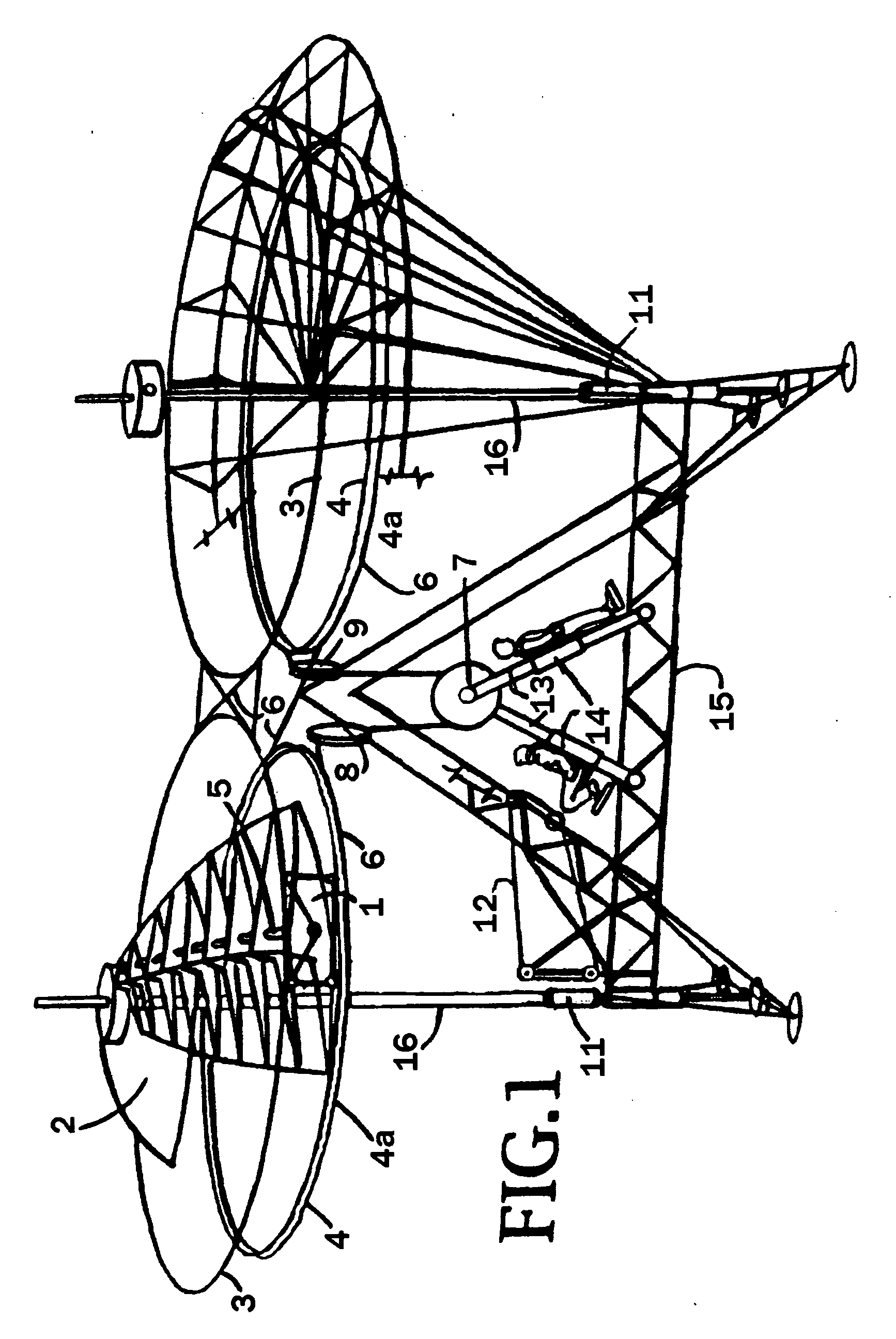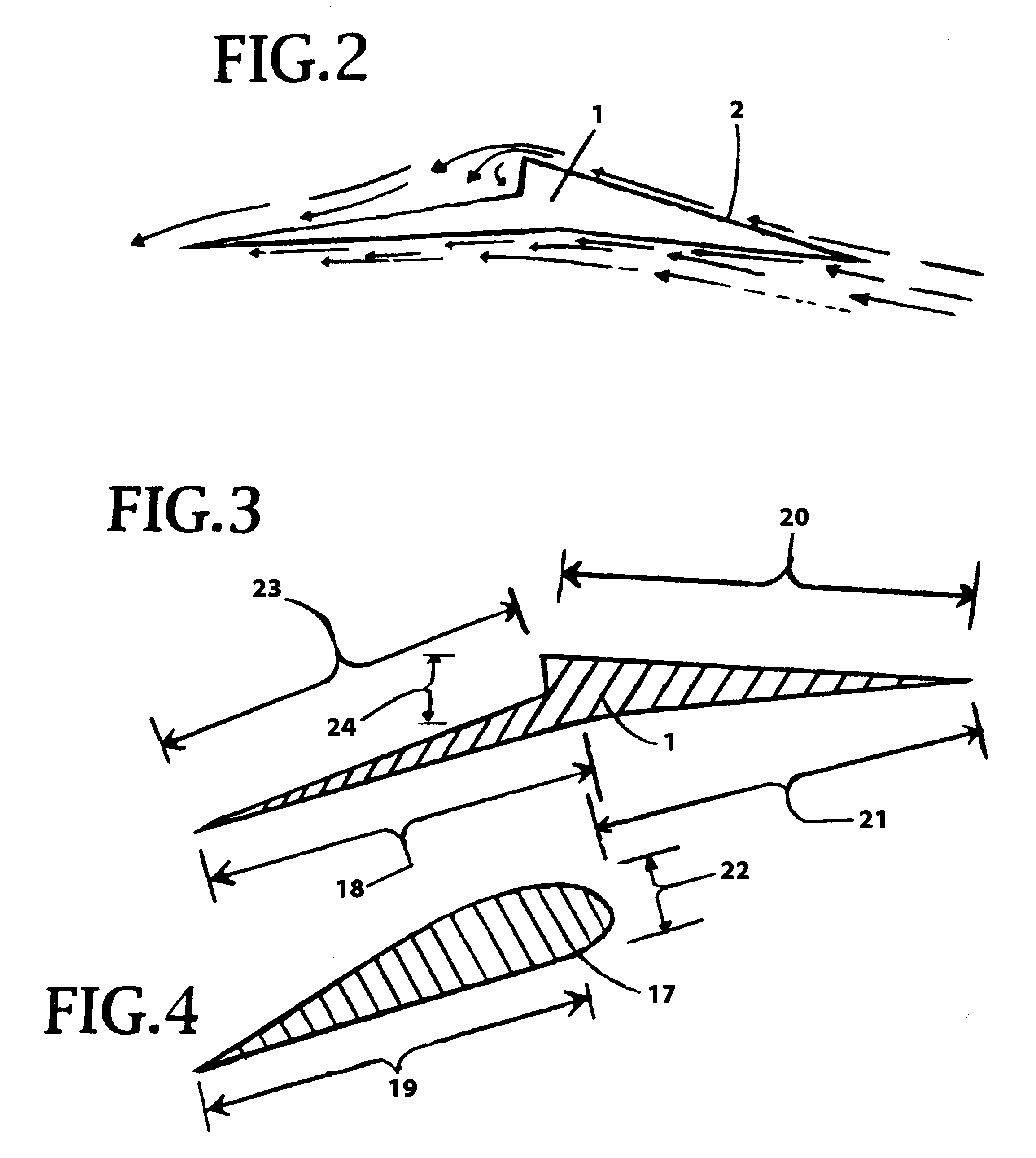Tambourine helicopter
a helicopter and helicopter body technology, applied in the field of helicopters, can solve the problems of drooping arc condition, incurred lift factor, side stress of the rotor turret, etc., and achieve the effect of removing the condition of drooping ar
- Summary
- Abstract
- Description
- Claims
- Application Information
AI Technical Summary
Benefits of technology
Problems solved by technology
Method used
Image
Examples
Embodiment Construction
[0038]Disclosed is the profile of a helicopter, wing-rotor blade 1 synergistically applied to two helicopter fuselages, one recreational FIGS. 1. 15 and the other commercial FIGS. 16-21. 38. The commercial receives two rotor wells centrally located within said fuselage 38 that receive annularly in each well, two systems of rotors 2 and their outer FIGS. encasements, with two turrets 35 in each said well with vertical shafts 34 respectively. Means in more detailed disclosure the perimeter of each rotor blade station is formed by said rotor wells 36 that receive the base portion rotor wings FIG. 25, 2 herein called “wings”, “rotors”, “rotor-wings”, and “helicopter blades” which are shrouded concentrically by rings at their outer extremities FIGS. 32, 51, 51a, 56, and 56a which act as circular compartments or encasements that restrict the tips of the rotors FIG. 32 to stabilize an arc that approaches a Para dome configuration FIGS. 27 and 28 embodying said parachutes' lifting capabilit...
PUM
 Login to View More
Login to View More Abstract
Description
Claims
Application Information
 Login to View More
Login to View More - R&D
- Intellectual Property
- Life Sciences
- Materials
- Tech Scout
- Unparalleled Data Quality
- Higher Quality Content
- 60% Fewer Hallucinations
Browse by: Latest US Patents, China's latest patents, Technical Efficacy Thesaurus, Application Domain, Technology Topic, Popular Technical Reports.
© 2025 PatSnap. All rights reserved.Legal|Privacy policy|Modern Slavery Act Transparency Statement|Sitemap|About US| Contact US: help@patsnap.com



